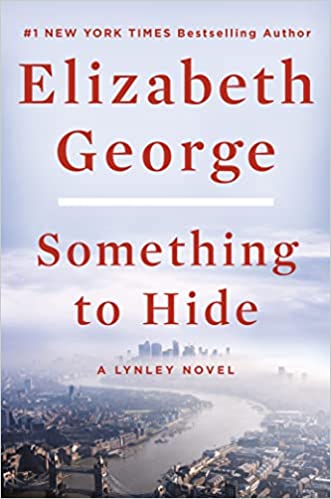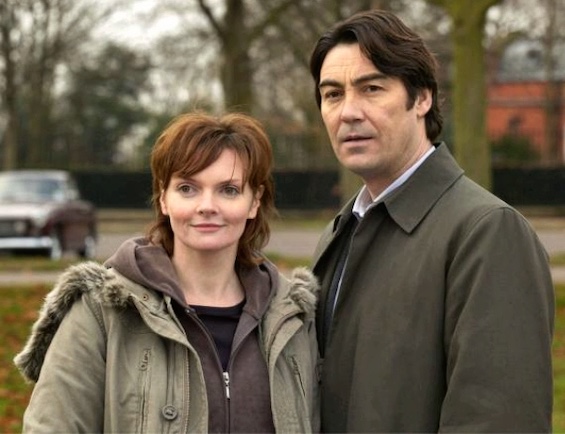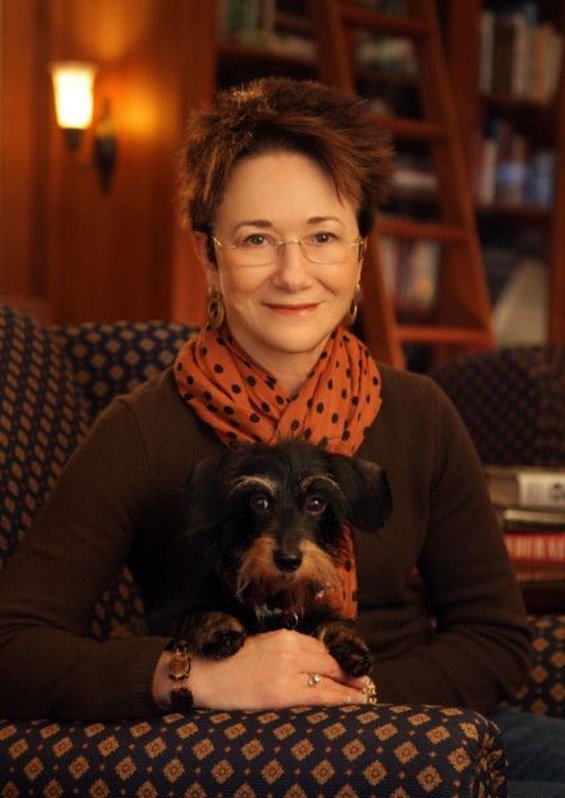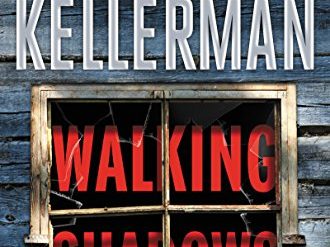
One of the cruelest and most hideous of the many ways men mistreat women is the ancient African practice of female genital mutilation. FGM often condemns a woman to a lifetime of agony. Elizabeth George brings to light how the tradition continues today in Nigerian and Somali immigrant communities overseas. In Something to Hide, she builds a compelling and suspenseful tale about an investigation into the hidden practice of FGM in London. The book is the 21st entry in her long-running series of detective tales featuring Inspector Thomas Lynley and Sergeant Barbara Havers.
A murder leads into the world of FGM
Lynley and Havers don’t set out to investigate FGM. The malicious surgical procedure—almost always carried out by untrained women wielding used razor blades or box cutters—comes to light only in their pursuit of a cop killer. Detective Sergeant Teo Bontempi, adopted as a young girl from Africa by a white immigrant couple, had recently been transferred from the unit at Scotland Yard specializing in the investigation of crimes against women. But even at her new post, she continues to build a case against a clinic she suspects of practicing FGM. Then, at home one night, someone bashes in her skull.
Something to Hide (Inspector Lynley #21) by Elizabeth George (2022) 705 pages ★★★★☆

A cast of familiar characters
Reading the Lynley novels at intervals of a year or two is a lot like reconnecting with family after a long trip abroad. They feel like distant cousins, each perfectly rendered as a fully fleshed personality.
At Scotland Yard
Thomas Lynley
As Something to Hide opens, Detective Inspector Thomas Lynley has become an Acting Detective Chief Superintendent, having succeeded in forcing his boss, DCS Isabelle Ardery, to “take the cure” for her alcoholism on the Isle of Wight. Lynley is a gifted investigator with an enviable record of success marred only by his tendency to resist pressure from above in Scotland Yard’s hierarchy. As we know, Lynley is a titled aristocrat, an earl with an ancestral estate in Cornwall but resists any effort for people to call him “your lordship.” Only his long-term cook and dogsbody, Joseph Cotter, can get away with that. In the novel, Lynley is struggling to maintain a love affair with Daidre Trahair, a veterinarian. And she doesn’t even know of his family background.

Barbara Havers
Lynley works most closely with his sidekick, Barbara Havers. Although a supremely competent detective, DS Barbara Havers is a comical figure, perennially overweight, dressing like a colorblind adolescent, and subsisting largely on Pop-Tarts, take-out curry, and other foods she shouldn’t eat. The departmental secretary, Dorothea (Dee) Harriman, is constantly on Havers’ case about the lack of a love interest in her life. She torments the detective with one mad scheme after another to get the woman to meet men. So far, however, Dee has succeeded only in enlisting Havers in a tap-dancing class—attended mostly by women. DS Havers bears little resemblance to Sharon Smalls, the attractive actress who portrays her on the BBC-TV series, The Inspector Lynley Mysteries.
Winston Nkata
Detective Sergeant Winston Nkata often plays a secondary role assisting Lynley. But in Something to Hide he enters center stage as the team’s investigation into the practice of FGM in London lends him a big advantage. Nkata is Black, the English-born son of a Jamaican couple. (His mother also enters the scene; a gifted cook, she runs Alice N’s, a bustling restaurant serving Caribbean food.) As a teenager, Nkata had become caught up in a gang. In a knife fight, he had suffered a vicious wound to his face, which left him with a ragged scar from his mouth nearly all the way to an eye. But at almost six-foot-six and heavily muscled, no one has ever since been able to take advantage of him.
The St. James family
Simon St. James is one of Lynley’s oldest friends. Forced to walk with a cane and a brace on one leg, St. James is a forensic scientist who spends much of his time testifying in court. His wife, Deborah St. James, is an accomplished photographer whose assignment for the Department of Education and the National Health Service opens the novel. She is eleven years younger than her husband, whom she’d idolized as a child. Her father, Joseph Cotter, lives in the large home they share. He cooks, as he does for Lynley.
The new characters we meet in this novel
To introduce the subject of female genital mutilation and the multiple mysteries it triggers, George brings to the fore three families, one African, one Continental, and one British as well as a nonprofit human service organization.
The Bankole family
Abeo Bankole is a tyrant who terrorizes his wife, Monifa, and their two children. He is a modestly successful merchant with a butcher shop and a grocery stall in the market. The couple is Nigerian, their children born in London. The son, Tanimola (Tan), is seventeen as the story begins. His sister, Simisola, known as Simi, is eight and clings to her mother. Tani is in love with a Black English girl who is slightly younger than him. But his father is intent on finding a Nigerian “virgin” for him to marry.
The Phinney family
DCS Mark Phinney is a wreck. He’s besotted with his girlfriend but devoted to his marriage to Pietra (Pete), who lavishes every waking minute on caring for their severely disabled eleven-year-old daughter, Lilybet. Phinney’s younger brother, Paulie, owns two pawnshops and will play a role in the unfolding drama.
The Bontempi family
Detective Sergeant Teo Bontempi has resurrected her birth name, Adaku Obiaka, and dressed in Nigerian garb to go undercover in investigating a suspected FGM clinic. Her later murder is the central mystery Lynley and his team must solve. We meet her Italian father, Cesare, and French mother, Solange, and her much younger sister, Rosalba (Rosie). The sister will play a key role in the story.
Orchid House
Zawadi, who goes by one name only, runs Orchid House to protect young girls threatened with female genital mutilation or suffering the consequences. She is a tough and demanding lady who has little patience for white do-gooders or, in fact, whites of any sort. She tolerates Narissa Cameron, a mixed-race woman who is a filmmaker intent on dramatizing the evil of FGM in a documentary. But Zawadi is less generous with Deborah St. James who has been assigned to Orchid House to photograph and interview the girls.
As we see in the course of the story, everyone has something to hide.
About the author

Elizabeth George (1949-) has published 21 novels to date in the Inspector Lynley series. The first appeared in 1988. The BBC adapted the first eleven Lynley novels into a long-running television series. George has also written four novels in another series and three collections of short stories. She is American, born in Ohio, and raised in the San Francisco Bay Area.
For more reading
I’ve read most of the Inspector Lynley novels. Since I launched this site in 2010, I’ve reviewed the last five of them:
- This Body of Death – Inspector Lynley #16 (Elizabeth George indulges in sociological speculation)
- Believing the Lie – Inspector Lynley #17 (The latest Inspector Lynley novel, unpredictable as always)
- Just One Evil Act – Inspector Lynley #18 (Inspector Lynley and Barbara Havers go to Tuscany)
- A Banquet of Consequences – Inspector Lynley #19 (Elizabeth George’s latest is much more than a whodunit)
- The Punishment She Deserves – Inspector Lynley #20 (The question is, who deserves the punishment?)
You might also enjoy my posts:
- Top 10 mystery and thriller series
- 20 excellent standalone mysteries and thrillers
- 30 outstanding detective series from around the world
- Top 20 suspenseful detective novels
And you can always find my most popular reviews, and the most recent ones, plus a guide to this whole site, on the Home Page.


























